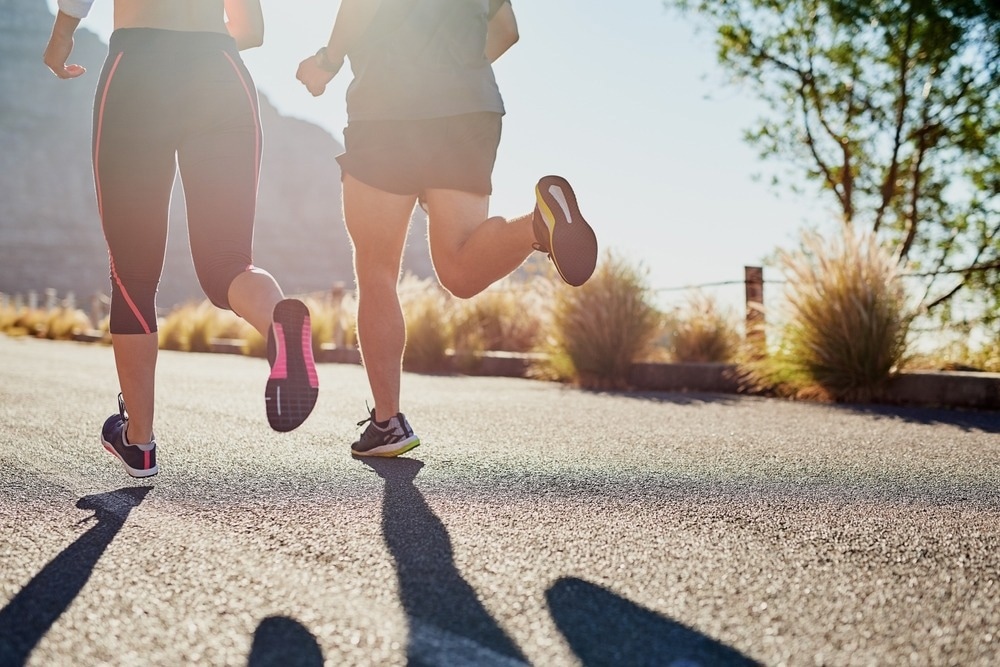New research indicates that an acute exercise session may improve isolated muscle insulin resistance in carriers of a TBC1D4 nonsense mutation, a variant linked to hyperinsulinaemia and elevated type 2 diabetes risk.
In a recent study published in Nature Metabolism, researchers elucidate the metabolic consequences of the rare TBC1D4 p.Arg684Ter genetic variant on the diabetes risk of its carriers. Found only in a small portion of the isolated Greenlandic Inuit population, this recently discovered genetic variant has been associated with an up to 10-fold increase in type 2 diabetes (T2D) risk. Hitherto, however, its mechanism of action remained elusive.
Extended (six-hour) glucose tolerance tests and euglycemic–hyperinsulinemic clamp tests in cases (TBC1D4 p.Arg684Ter variant carriers; n = 4) and case-matched controls (Inuit noncarriers) revealed that the genetic variant induces muscle insulin resistance specific to skeletal muscles. Encouragingly, acute physical activity (~1 hour) was sufficient to rescue carriers to baseline noncarrier metabolic regulation levels (thereby alleviating the condition).
This study is the first to report genetic T2D factors that exclusively influence the insulin profiles of specific systems (herein skeletal muscles) while leaving others (liver, spleen) unaltered. It highlights the importance of carrying out medical research in minorities and small isolated populations. It suggests the need for targeted preventive strategies and personalized assessments/interventions to attenuate chronic diseases, including T2D.
Background
Obesity and diabetes are two of the most prevalent chronic conditions plaguing today’s developed society. Alongside their comorbidities (cardiovascular diseases [CVDs] and certain cancers), obesity and type 2 diabetes (T2D) are responsible for the bulk of annual non-pathogen-associated human mortality. Even in individuals who survive these conditions to old age, obesity, and T2D can severely impact the quality of life, compelling global public health agencies, including the World Health Organization (WHO), to support research and outreach aimed at curbing their risk factors.
Obesity and T2D are by no means recent discoveries, albeit their incidence and prevalence in human populations are rising at unprecedented levels. Decades of research have attempted to unravel the risk factors associated with impaired glucose metabolism and the mechanisms governing these interactions, revealing varying contributions of genetics, behavior (diet, physical exercise, and sleep patterns), and environment in disease outcomes.
Unfortunately, the bulk of this research has focused on mainland American or European (predominantly White) populations, leaving minorities understudies. The role of genetics in small isolated populations such as the Indonesian Bajau tribe and the Greenlandic Inuit tribes remains all but unknown.
Previous research by the present study group identified a globally rare nonsense mutation in the TCB1D4 gene that dramatically (10-fold) increases the T2D risk of Inuits. Despite being found in ~17% of the Inuit population and estimated to be the primary cause for more than 10% of T2D in these people, the mechanism underpinning the varient’s (TBC1D4 p.Arg684Ter) influence remains unknown.
About the study
Since TBC1D4 p.Arg684Ter carriers provide a unique opportunity to unravel the interplay between genetics, physiology, and even exercise in regulating glucose homeostasis, the present study aims to utilize multiple metabolic and genetic analyses to elucidate the role of the variant in altering insulin sensitivity.
Potential study participants were recruited from the Inuit Health in Transition (IHIT) database and comprised adults (25-70 yrs) with body mass index exceeding 20 kg m-2 who were not presently undergoing anti-T2D treatment. Prospective participant screening identified eight homozygous TBC1D4 pArg684T variant carriers (cases). Cases were matched with sex-, age-, and BMI-matched noncarriers (controls). Data collection included fasting blood glucose, HbA1c, BMI, and body composition measurements collected at baseline and each experimental follow-up.
Experimental procedures included an extended, 6-hour-long oral glucose tolerance test (OGTT) alongside respiratory exchange ratio (RER) measures and oxygen use, thereby establishing participant-specific baseline values. Participants abstained from caffeine, alcohol, and physical activity during the three days before study investigations.
The Krogh cycle ergometer and a posterior drawer test were used to simulate physical exercise. Catheters were used to draw multiple simultaneous blood samples from arterial and venous flows, allowing for time-bound glucose comparison across blood sources.
Western blotting assays were used to identify, characterize, and quantify protein content from drawn blood and to isolate samples for proteomic analyses (RNA-sequencing). Glucose and lactate concentrations were estimated using a blood gas analyzer. Acid hydrolysis assays were performed to quantify muscle glycogen content.
Study findings
The present study is the first to confirm cases of human insulin resistance isolated to a single tissue/organ system type – Variant carriers of TBC1D4 pArg684T demonstrated severe insulin resistance and metabolic alternation in skeletal muscle fibers and their associated system, but normal insulin tolerance in other organs such as the liver and spleen. TBC1D4 protein levels were significantly higher in the skeletal muscles of carriers versus controls, as were glucose transporter type 4 (GLUT4) levels, which is surprising given that both carriers and noncarriers express similar concentrations of GLUT4 mRNA.
Encouragingly, 1 hour of acute physical activity was observed to rescue carriers’ insulin sensitivity to controls’ baseline sensitivity levels but could not match controls’ post-exercise insulin affinity.
Conclusions
The present study presents the first evidence of genetically-mediated insulin resistance that selectively targets a specific tissue type (herein skeletal muscle fibers). It thereby highlights the need for genetic screening and personalized interventions to become routine in T2D diagnosis and treatment. Inuit carriers were observed to demonstrate substantially higher insulin resistance and attenuated glucose transport efficiency than their noncarrier counterparts.
While acute physical activity was observed to rescue carriers to the resting-state levels of noncarriers, the long-term beneficial effects of physical exercise and training remain to be unraveled in future research.
Journal reference:
- Kristensen, J.M., Kjøbsted, R., Larsen, T.J. et al. Skeletal muscle from TBC1D4 p.Arg684Ter variant carriers is severely insulin resistant but exhibits normal metabolic responses during exercise. Nat Metab (2024). doi:10.1038/s42255-024-01153-1 https://www.nature.com/articles/s42255-024-01153-1
Source link : News-Medica

